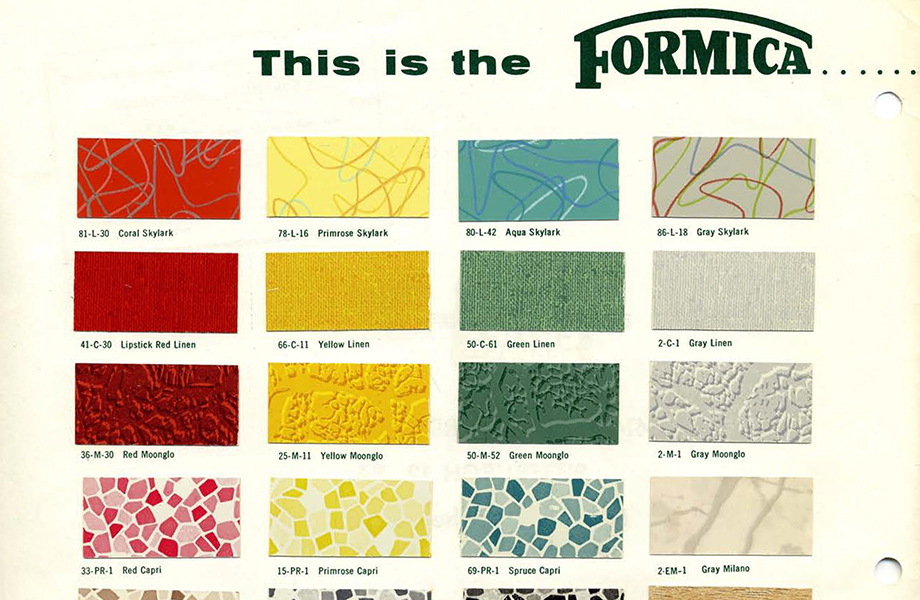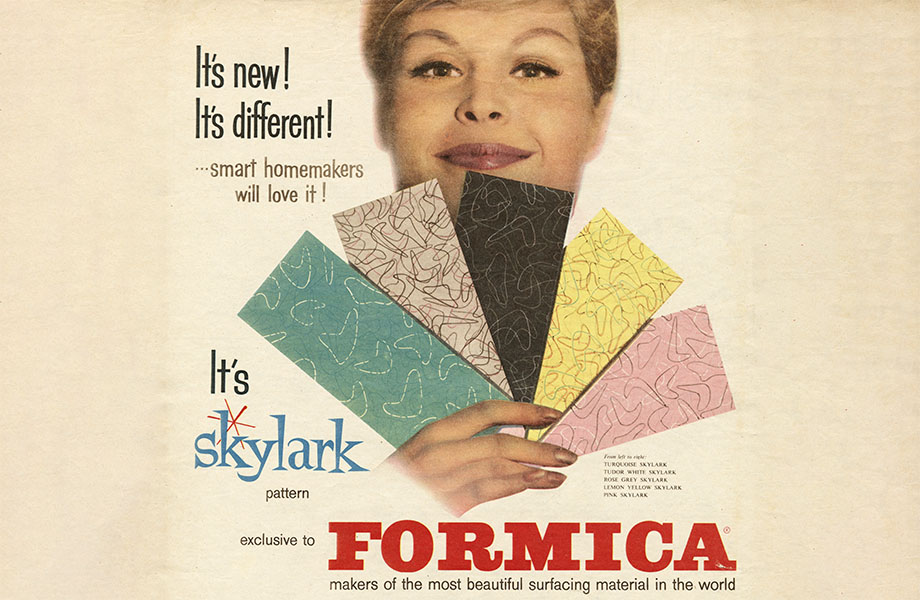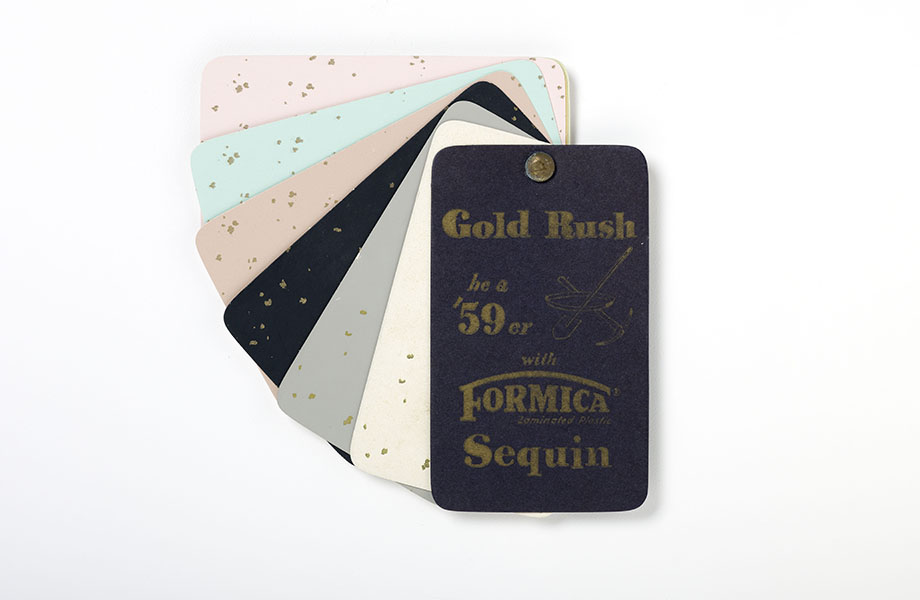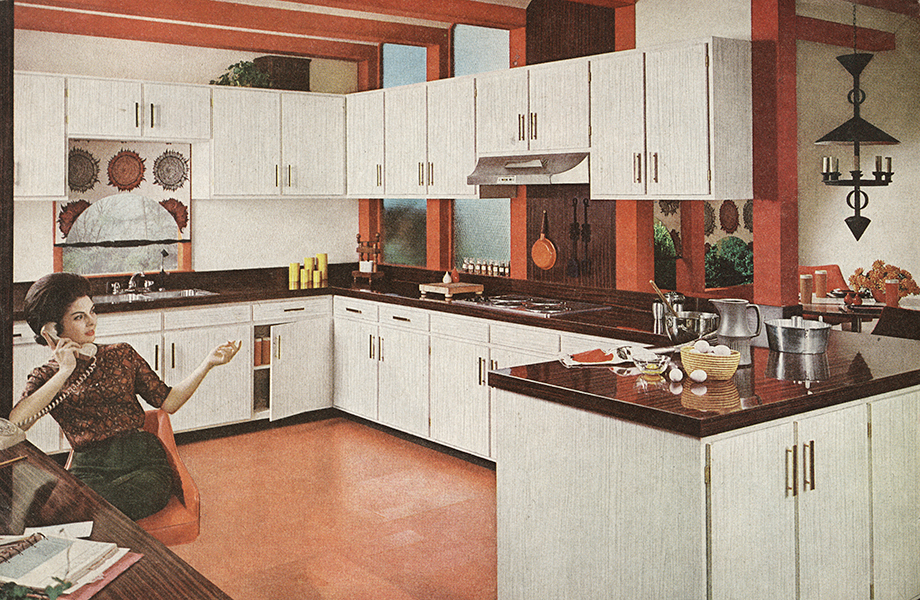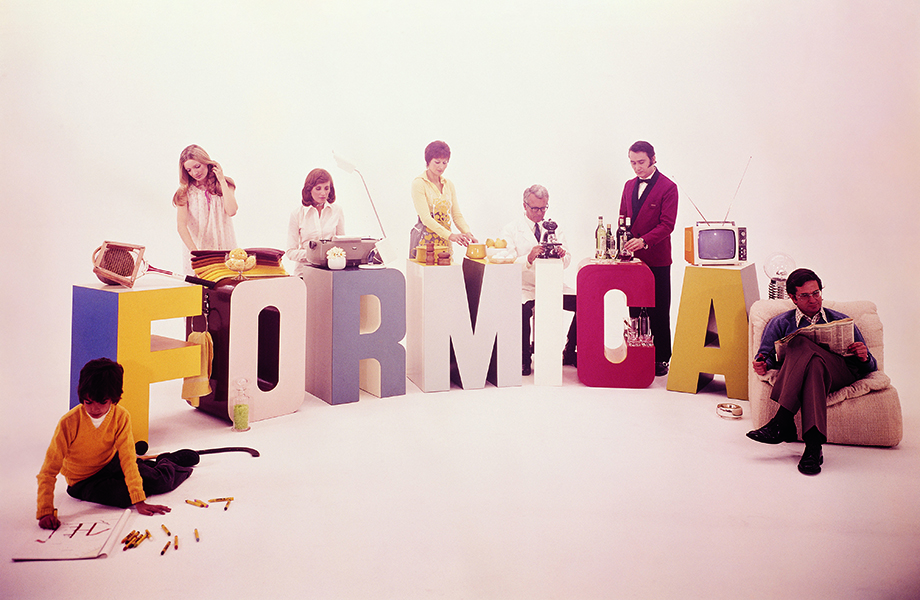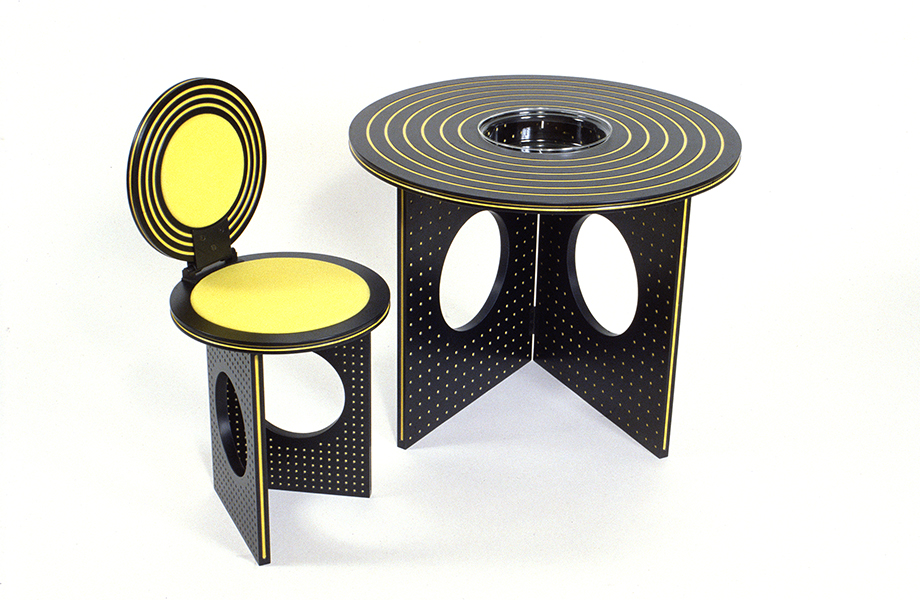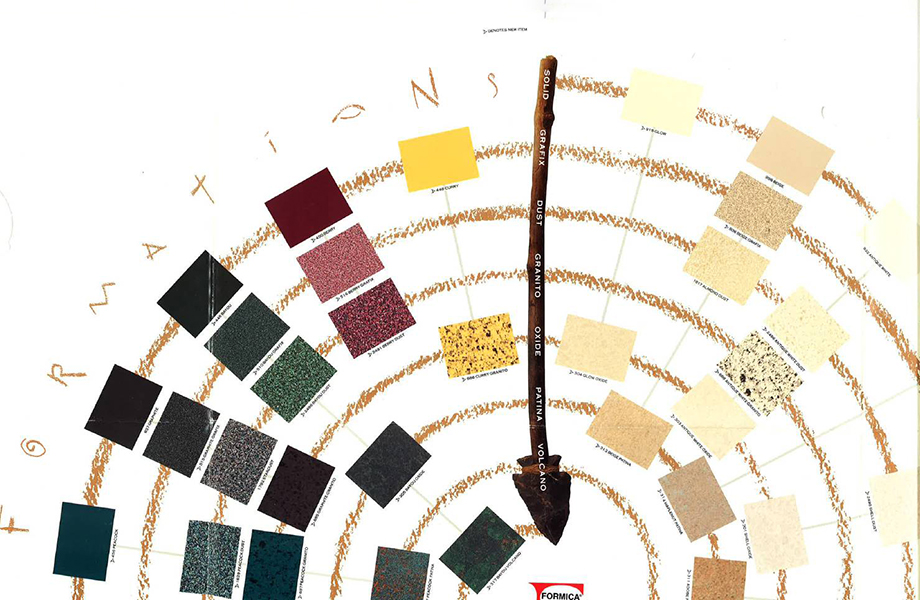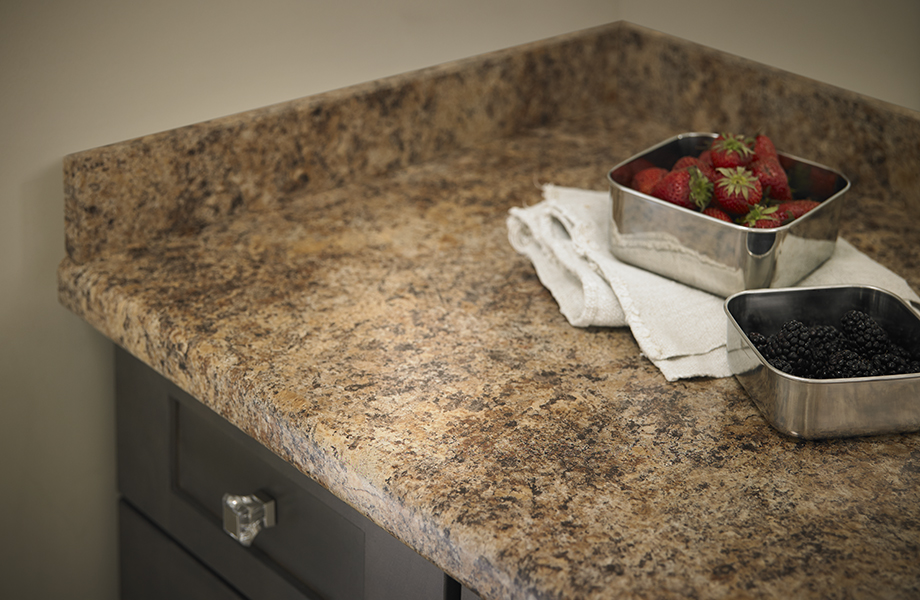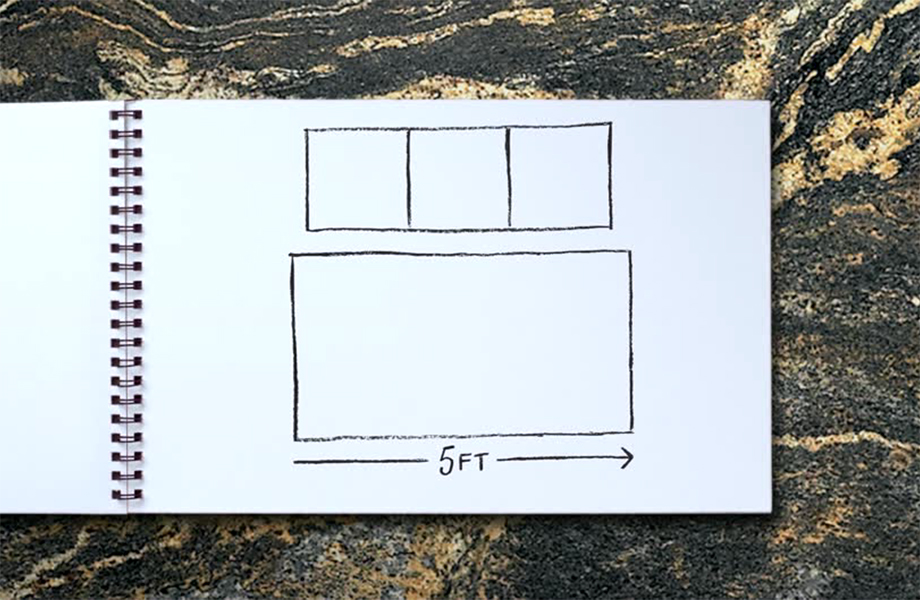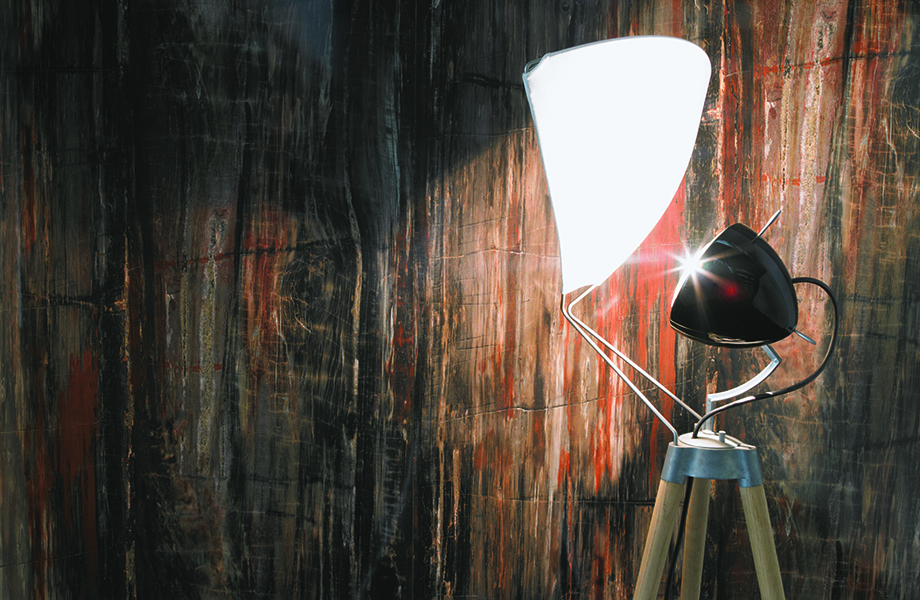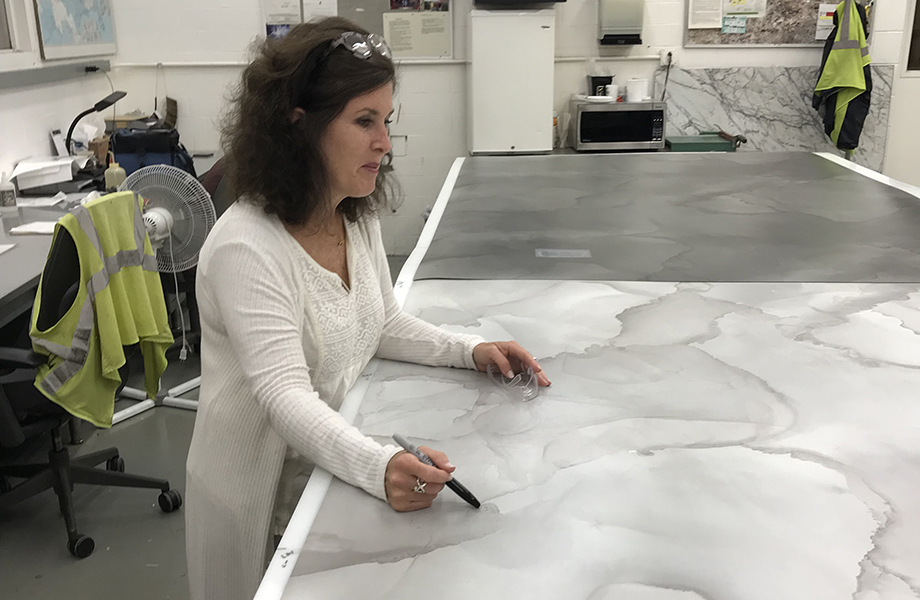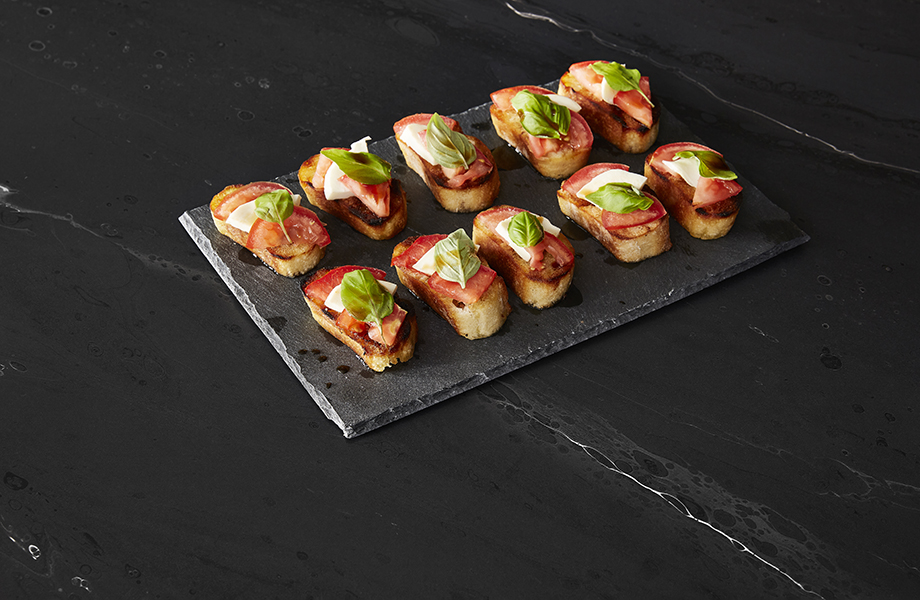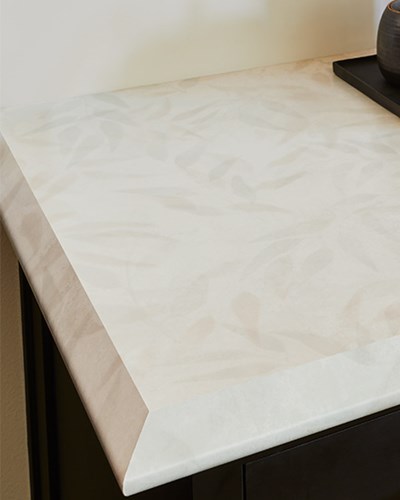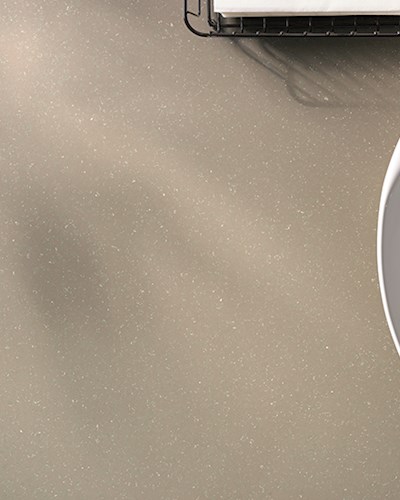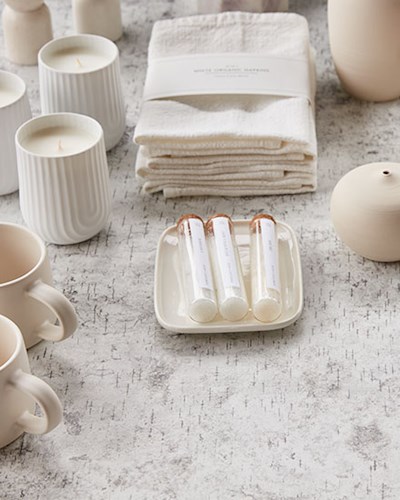From Skylark to Watercolors: A Look Back at Iconic Formica® Laminate Patterns
From Skylark to Watercolors: A Look Back at Iconic Formica® Laminate Patterns
Formica Group has long been known for our broad array of innovative patterns and taste-making colors. Here we highlight memorable looks from the 1950s through today.
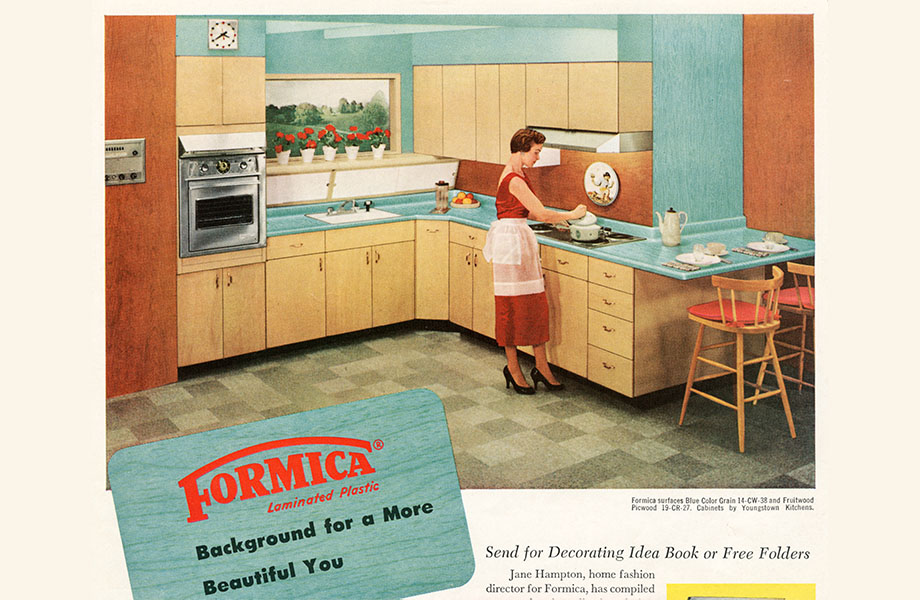
A Walk Down Memory Lane
Formica® Laminate patterns and colors are constantly evolving to showcase the design trends, colors and movements of the era. But have you ever wondered how it all began?
Let’s take a fun look back at a few of the distinctive patterns that defined major design shifts over the years and see how they’ve evolved to match consumer and commercial design tastes.
The Look of Laminate Takes off
While Formica® Laminate was technically invented as insulation material in 1913, the decorative side of the business took off in the late 1920s. It all started during the radio revolution. (Admit it, you weren’t expecting that!) The Formica Insulation Company began providing insulated laminate boards in black or brown for the exterior casings of radio sets. In 1927, Jack D. Cochrane, the head of research, reengineered the way laminate’s layers were crafted, enabling lighter designs to be printed on the decorative sheet and marking the shift from industrial products to decorative ones.
Over the next two decades, the company’s products grew in popularity, giving surfaces in Radio City Music Hall and the RMS Queen Mary ocean liner cigarette-proof, wipe-clean capabilities. When the post-WWII housing boom hit in the 1940s, the U.S. ushered in millions of homes featuring laminate countertops in many now-iconic patterns.
1950s – 1960s
The post-war years ushered in the golden era of Formica® Laminate, with the kitchen becoming the gathering place for both family meals and entertaining. Suburban life was centered on the home with the housewife’s role as the cleaner in chief.
In 1950, industrial designer Brooks Stevens, known for his work on trains, boats and cars, created the Skylark pattern, capturing the buoyant optimism of the period. This graphic invention established Formica as a prominent voice in design. In 1954, fellow industrial designer Raymond Loewy devised new colors for Skylark as part of his Sunrise Collection. (Skylark was eventually renamed Boomerang, and a modern version of the pattern is still part of the Formica® Laminate offering today.)
Dubbed the “miracle surface,” Formica® Laminate was making smooth, shiny, colorful and highly patterned surfaces possible in this Populuxe period, and cleanability was key. Other notable patterns of the era included the gold-flecked Sequin series, architectural Linen series, and mosaic-inspired Capri series. All became hallmarks of the Mid-Century Modern design aesthetic that continued well into the 1960s.
1970s
As we all know, design took…an interesting turn in the 1970s, with the bold, solid hued laminate of the Brady Bunch house acting as a trend beacon for much of middle America. The burgeoning environmental movement and nature-inspired palettes meant homes and commercial spaces were awash in avocado green, goldenrod, rusty orange and brown. Dark, heavy woodgrain laminate patterns also emerged as a strong statement. Toward the end of the decade, Formica Corporation created the Design Advisory Board to bring its signature laminate products into the modern era.
1980s – 1990s
The 1980s brought a new attitude toward the materials used in design, with elements such as Formica® Laminate symbolizing vitality and free thinking. The Baby Boomers, now parents, also had a fresh appreciation for the laminate underpinnings of their youth. Bold graphics and geometrics became a hit during the short-lived but popular Memphis aesthetic period.
During this time, the Zolatone company’s small-dot painting technique was the rage of the architectural community and became synonymous with ‘modern’ in the 1980s. This trend of creating lightly textured surfaces with varying shades of layered color particles led to abstractions of solid colors. Formica Group’s newfound ability to print tiny dots in patterns for tone-on-tone looks led to the 1990 launch of the Formations Spiral. This collection of Zolatone®-inspired prints included patterns such as Grafix, Dust and Oxide, some of which remain in the Formica® Laminate range today as optical solid standards.
2000s – 2010s
As the new century dawned, the market grew more sophisticated in its handling of full-size slabs of granite and marble, leading to an explosion in the demand for natural stone on walls, floors and countertops. In 2001, Formica Group used an 18-inch square tile of Giallo Veneziano stone as the inspiration for Butterum Granite laminate, a warm, sophisticated pattern based on a rendering of actual stone. However, computers at the time lacked the memory required to retain a scanned image of a full stone slab. This limited the print size of the resulting laminate sheets and required patterns to be repeated every 18 inches.
However, by 2009, high-powered scanners and computer processors led to a digital transformation, and it was now possible to scan a full-size slab of stone with high resolution. Formica Group leveraged this capability to launch the 180fx® Laminate Collection, giving homeowners an affordable option for achieving the look of exotic stone and rare woods with remarkable design realism and much lower maintenance.
2020s
We’re just at the start of this new decade, and individuality and artistry are in full bloom. Consumers have truly embraced the maker movement, and this aesthetic is influencing many aspects of design. In response, Formica Group introduced its unprecedented Watercolor series in 2020, as well as the Painted Marble series. These unique patterns have brought us full circle back to our roots as we celebrate inspired creativity.
Covid-19 has pushed digital possibilities and expectations ahead by several years, revealing new opportunities across all aspects of culture and design. We can’t wait to see what’s next!
Zolatone is a registered trademark of ICP Construction, Inc.

